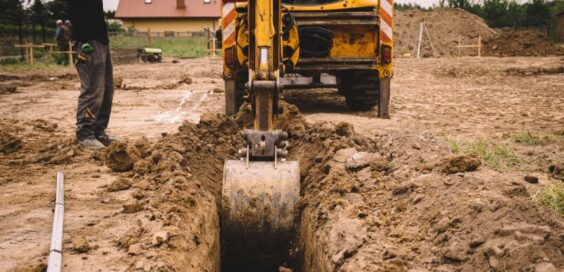How To Build a Strong House Over Unstable Soil
Written by SayBuild-admin // May 22, 2025 // Home Construction // Comments Off on How To Build a Strong House Over Unstable Soil

Building a home is one of the most significant investments a person can make, and the stability of that home begins with its foundation. Constructing on unstable soil can be challenging, as this type of terrain may shift, expand, or compress, posing unique risks to the structural integrity of the building.
If left unaddressed, it can lead to issues such as foundation cracks, uneven settling, or structural collapse over time. By understanding how to build a strong house over unstable soil, you can create a safe structure that lasts even on the most unpredictable ground.
Provide Proper Drainage Solutions
Unstable soils often have poor water retention characteristics, which can lead to erosion, swelling, or shrinkage. To counter this, implement efficient drainage systems during construction. Begin by grading the land to direct surface water away from the property. Installing French drains, sump pumps, or other groundwater management systems can prevent moisture buildup around the foundation. Proper drainage stabilizes the soil and ensures the longevity of your home’s structural components.
Conduct a Thorough Soil Analysis
Learning what type of soil you’re dealing with is a crucial step to take when building on unstable ground. This is why you need a soil test before building a home, as it provides critical insights into the soil’s composition, stability, and bearing capacity. A professional geotechnical engineer can help assess potential risks, including soil expansion or water retention issues, and recommend the most suitable solutions.
Focus on Foundation Design
When working with unstable soil, choose foundation types that distribute loads evenly and minimize the risk of settling. Deep foundations, such as piles or piers, are effective for shifting soil, as they anchor the structure to more stable layers below. Understanding the things that go into pouring a strong concrete foundation, such as the right mix of concrete, rebar, and proper curing, is essential. These elements work together to create a base that can withstand the challenges posed by unstable soil.
Use Soil Stabilization Techniques
To enhance the load-bearing capacity of weak soil, you can employ various soil stabilization methods. Common techniques include mixing the soil with lime or cement to increase its strength or compacting the soil to reduce voids and improve density. Geotextiles can reinforce the soil and provide added support. These methods create a safer building site and help mitigate the long-term effects of soil movement.
Monitor and Maintain the Property
After construction, keep an eye out for cracks in walls or uneven flooring throughout the home. Address drainage issues promptly to prevent water from seeping into the soil around the foundation. Routine inspections by a structural engineer can help you catch potential problems early and maintain the integrity of your house.
You can build a strong house on unstable soil with careful attention to detail and expert help at every stage of the process. From understanding the importance of soil testing to designing a reliable foundation, these steps will ensure your home remains safe and sturdy.
Image Credit: wstockstudio, #507541082








 If you want to contribute tutorials, news or other money-related stuff:
If you want to contribute tutorials, news or other money-related stuff:  Share our home building library with your facebook friends:
Share our home building library with your facebook friends:  Do you have any ideas or suggestions you would like to make?
Do you have any ideas or suggestions you would like to make?  If you like what we do, please subscribe to our
If you like what we do, please subscribe to our  All content Copyright © 2012 SayBuild. Part of nBuy Home Management Network.
All content Copyright © 2012 SayBuild. Part of nBuy Home Management Network.